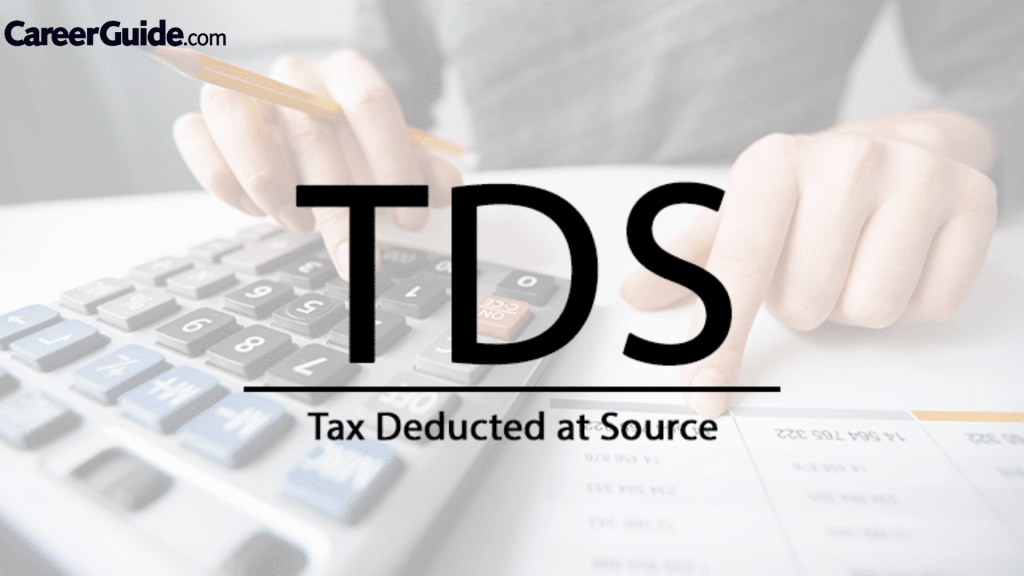TDS Overview

TDS is deducted by the payer or employer at the time of making the payment, and a TDS certificate is issued to the recipient or employee as proof of tax deduction. The recipient can claim credit for the TDS deducted while filing their income tax return.
TDS Important Date
Important TDS Dates | Due Date |
|---|---|
| Deposit of TDS | On or before 7th of the following month |
| Issuance of TDS certificates | On or before 15th of the month following the quarter |
| Filing of TDS return (Quarter 1) | 31st July |
| Filing of TDS return (Quarter 2) | 31st October |
| Filing of TDS return (Quarter 3) | 31st January |
| Filing of TDS return (Quarter 4) | 31st May |
tds full form, tds application form, tds criteria, tds important dates, tds cutoff,
Application Form
Form Name |
Purpose |
Issued By |
Received By |
|---|---|---|---|
| Form 16 | Proof of tax deducted at source from salary income | Employer | Employee |
| Form 16A | Proof of tax deducted at source from income other than salary | Payer or deductor, other than an employer | Payee or deductee |
| Form 26AS | Consolidated tax credit statement | Government | Taxpayer |
| Form 27EQ | Details of tax collected at source (TCS) on specified transactions | Deductor | Government |
| Form 24Q | Details of tax deducted at source from salaries paid to employees | Employer | Government |
How To Apply For TDS
- Obtain a TAN (Tax Deduction and Collection Account Number): TAN is a unique 10-digit alphanumeric code that is required to deduct and deposit TDS with the government. You can apply for TAN online through the NSDL or UTIITSL portals, or through authorized TIN facilitation centers. The application form for TAN is Form 49B.
- Fill up the TDS registration form: The TDS registration form varies based on the type of entity (individual, company, firm, etc.). You can download the appropriate form from the official website of the Income Tax Department of India or obtain it from the nearest TIN facilitation center.
- Submit the form and required documents: Once you have filled up the form, you need to submit it along with the necessary documents to the TIN facilitation center or the concerned income tax office. The required documents may include proof of identity, address, and PAN (Permanent Account Number).
- Verification and processing: After the submission of the form and documents, the income tax department will verify the information provided and process the TDS registration application. Once the registration is approved, you will receive a certificate of TDS registration.
Frequently Asked Questions
TDS is a tax collection mechanism in which the deductor is required to deduct a certain percentage of tax at the time of making payment to the deductee and deposit it with the government.
Any person or entity making payment to another person or entity for specified transactions such as salary, interest, rent, commission, etc. may be liable to deduct TDS.
The TDS rate varies depending on the nature of the transaction and the applicable tax laws. The rate is usually a percentage of the payment amount and is determined by the income tax department.
TAN (Tax Deduction and Collection Account Number) is a unique 10-digit alphanumeric code that is required for deductors to deduct and deposit TDS with the government. It is also used for filing TDS returns and other related purposes.
You can check TDS credit by viewing your Form 26AS, which is a consolidated tax credit statement that shows the details of tax deducted and deposited with the government by the deductor. You can view it online on the official website of the Income Tax Department of India.
TDS Eligibility Criteria
Criteria | Description |
|---|---|
| Applicable payments | TDS is applicable to certain payments such as salary, interest, rent, commission, professional fees, and other payments specified by the Income Tax Act. |
| Payment threshold | TDS is applicable only if the payment exceeds a certain threshold limit. The threshold limit varies depending on the type of payment and the applicable section of the Income Tax Act. |
| PAN requirement | The person or entity making the payment must have a valid Permanent Account Number (PAN) issued by the Income Tax Department. |
| Tax deduction and remittance | The person or entity making the payment must deduct tax at the applicable rate and remit it to the government within the specified due dates. |
TDS Cut Off
Payment Type | Cutoff for TDS |
|---|---|
| Salary | Total salary paid during the financial year exceeds Rs. 2.5 lakhs |
| Interest on Fixed Deposits | Interest earned during the financial year exceeds Rs. 40,000 for individuals and HUFs, and Rs. 50,000 for senior citizens |
| Rent | Annual rent paid exceeds Rs. 2.4 lakhs |
| Commission or brokerage | Payment exceeds Rs. 15,000 |
Standard Rate of TDS
Type of Payment | Standard Rate of TDS |
|---|---|
| Salary | As per individual’s income tax slab (ranging from 0% to 30%) |
| Interest Income | 10% (if interest income exceeds Rs. 40,000 in a financial year) |
| Rent | 10% (if rent paid during the financial year exceeds Rs. 2,40,000) |
| Professional Fees | 10% |
| Commission | 5% |
Benefit Of TDS
- Regular revenue stream for the government: TDS ensures a regular inflow of revenue for the government throughout the year. The government can use this revenue to finance various development projects and initiatives.
- Reduction of tax evasion: TDS helps in reducing tax evasion as it ensures that taxes are deducted at the source and deposited with the government. This reduces the possibility of individuals evading taxes.
- Easy compliance for taxpayers: TDS simplifies the tax compliance process for taxpayers. They do not have to worry about paying the entire tax liability at the end of the financial year, as TDS is deducted at the source. Taxpayers can also claim TDS credit while filing their income tax returns.
- Timely payment of taxes: TDS ensures timely payment of taxes by deducting tax at the time of payment. This reduces the burden on taxpayers and ensures that they do not miss the tax payment deadline.
- Increased transparency: TDS promotes transparency as all transactions are recorded and reported to the government. This helps in identifying discrepancies and ensures that the correct amount of tax is paid.



















